
HOME
INTRO
SYMBOLS
ALMANAC
ECONOMY
GEOGRAPHY
STATE MAPS
PEOPLE
FORUM
NEWS
COOL SCHOOLS
STATE QUIZ
STATE LINKS
BOOK STORE
MARKETPLACE
NETSTATE.STORE
NETSTATE.MALL
GUESTBOOK
CONTACT US


Dbl click any word in
document for definition.
Vermont State Heritage Breed of Livestock
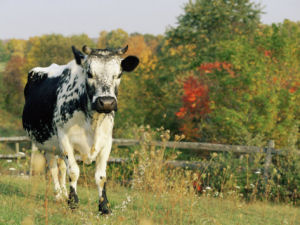
Heritage Breed of Livestock: randall lineback breed of cattle
Randall lineback photograph
The Randall Linback Breed of Cattle was named the "official state heritage breed of livestock" when Governor Jim Douglas signed House Bill No. 468 on March 9, 2006.
Randall lineback cattle are one of America’s last surviving "landrace" cattle breeds. A landrace is a "local" variety that develops primarily by natural processes to adapt to the specific environment in which it lives. This is opposed to a formal breed which is deliberately and selectively bred to conform to a pre-existing set of formal standards.
The Randall lineback is one of the most endangered bovine breeds in the United States.
H.468
AN ACT RELATING TO THE DESIGNATION OF RANDALL LINEBACK CATTLE AS A STATE HERITAGE BREED OF LIVESTOCK
It is hereby enacted by the General Assembly of the State of Vermont:
Sec. 1. FINDINGS
The only traditional breed of cattle to have originated in Vermont is the Randall Lineback. The Randall Lineback breed is named for the Samuel Randall family of Sunderland who developed the breed approximately 100 years ago by carefully preserving a closed herd. The breed’s appearance and striking color pattern set it apart from the standardized breed and distinguish it as unique. As recently as 1985, the Randall Lineback breed faced extinction when the remaining herd reached a low of between 15 and 20 head. Today, the Randall Lineback breed is growing, but still remains critically rare with fewer than 200 head registered nationally. In consideration of the contributions of the Randall Lineback breed to the agricultural history of Vermont, the state recognizes that preservation of this critically rare breed is integral to the heritage of Vermont.
Sec. 2. 1 V.S.A. § 515 is added to read:
§ 515. STATE HERITAGE LIVESTOCK BREED
The Randall Lineback breed of cattle shall be an official state heritage breed of livestock.
Vermont Law
The following information was excerpted from the Vermont Statutes Annotated, Title 1, Chapter 11, Section 515.
TITLE ONE. GENERAL PROVISIONS
CHAPTER 11. FLAG, INSIGNIA, SEAL, ETC.
1 V.S.A. § 515 (2012)
§ 515. State heritage livestock breed
The Randall Lineback breed of cattle shall be an official state heritage breed of livestock.
HISTORY: Added 2005, No. 97 (Adj. Sess.), § 2.
Sources...
"Vermont Statutes Annotated." LexisNexis, a division of Reed Elsevier Inc.. LexisNexis, a division of Reed Elsevier Inc., n.d. Web. 20 Feb 2012.
The State of Vermont. The Vermont State Legislature. House Bill No. 468. Montpelier: The State of Vermont, 2006. Web.
Additional Information
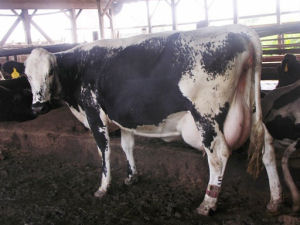
Heritage Breed of Livestock: randall lineback breed of cattle
The Randall Cattle Story: Cynthia Greech's Involvement With The Breed.
Randall Lineback Breed Association: Official website.
The Randall Cattle Breed Registry: Official website.
State mammals: Complete list of official state mammals from NETSTATE.COM
More symbols & emblems: Complete list of official Vermont state symbols from NETSTATE.COM.
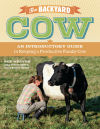
The Backyard Cow
Sue Ann Weaver
The Backyard Cow: An Introductory Guide to Keeping a Productive Family Cow, by Sue Ann Weaver. 240 pages. Publisher: Storey Publishing, LLC (February 28, 2012) You don’t need acres of land to keep a cow healthy, happy, and productive. You can raise one right in your own backyard, producing more than enough milk for a single family--up to six gallons per day!
The Backyard Cow covers everything you need to know, from selecting the right breed to understanding your cow’s behavior; providing shelter, health care, and daily maintenance; grooming; milking; and making cheese, yogurt, and other dairy products from your milk.
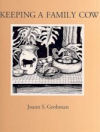
Keeping a
Family Cow
Joann S. Grohman
Keeping a Family Cow, by Joann S. Grohman. 180 pages. Publisher: Coburn Pr; 5th edition (2000) This book is intended as an inspirational manual for keeping a family milk cow. A lifetime of practical experience has been bound into one volume. Practical advice for the everyday and procedures for cow emergencies. Plus, answers to FAQ's like, 'Should you get a cow?' and 'How Much Space do I need' etc.
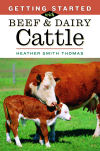
Getting Started with
Beef & Dairy Cattle
Heather Smith Thomas
Getting Started with Beef & Dairy Cattle, by Heather Smith Thomas. 288 pages. Publisher: Storey Publishing, LLC (July 1, 2005) If you've been dreaming about raising a family cow, or even a small herd, here's the book for you! Whether your interest is in beef or dairy farming, veteran cattle farmer Heather Smith Thomas helps you make the experience satisfying, rewarding, and even entertaining!
Beyond general standards and characteristics, Thomas also discusses specific breed attributes — Jerseys, for example, produce milk richer in butterfat than other dairy cattle — and how size, color, body shape, hair length, and milking ability make each animal more or less suitable to various needs. To complement the text, full-color photographs help you identify the many choices.
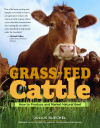
Grass-Fed Cattle
Julius Ruechel
Grass-Fed Cattle: How to Produce and Market Natural Beef, by Julius Ruechel. 384 pages. Publisher: Storey Publishing, LLC (July 1, 2006) As more consumers discover the benefits of grass-fed beef — sustainability, good taste, and antibiotic-free — demand continues to grow. For any farmer interested in entering this profitable specialty area, here is the first complete manual on raising, caring for, and marketing grass-fed cattle. Author Julius Ruechel includes advice on herd selection, breeding, pasture management, fencing, winter grazing, diseases, equipment, slaughter, labeling, marketing, and financial planning.
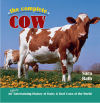
The Complete Cow
Sara Rath
The Complete Cow, by Sara Rath. 144 pages. Publisher: Voyageur Press (October 24, 2003) This is a light hearted yet serious look at dairy and beef cows of the world--both familiar and not so familiar.
From ancient myths to a breed encyclopedia to a whimsical look at the fun pop culture surrounding famous cows, this books has it all. It is beautifully illustrated with large format color photos of all breeds and is the first book to feature cows around the globe.
Throughout the book you'll discover all kinds of bovine trivia: how to say "moo," "cow", and "cowpie" in many languages, a fascinating cow migration map, advice on naming your cow, and more.

